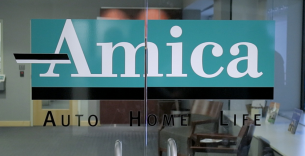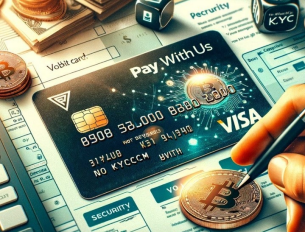In recent years, cryptocurrency has become one of the most talked-about assets in the investment world. While Bitcoin, Ethereum, and other digital currencies have garnered significant attention due to their potential for high returns, many investors are curious about how they can incorporate these assets into their retirement savings. After all, the goal of investing for retirement is to grow your wealth over time, and crypto offers exciting opportunities in that regard. However, the question remains: How can you invest in crypto via your retirement account?
This article will guide you through the process of investing in cryptocurrency using retirement accounts, outline the benefits and challenges, and explain how you can take advantage of digital assets in a tax-advantaged way.
Can You Invest in Crypto Through Your Retirement Account?
The short answer is yes, but it depends on the type of retirement account you hold and the platform or custodial service you use. Unlike traditional investment vehicles, cryptocurrencies are not directly available through most conventional retirement accounts like 401(k)s or IRAs. However, there are specific methods and account types that allow you to add crypto to your retirement portfolio. The key is understanding how to legally invest in crypto while enjoying the tax advantages that retirement accounts provide.
Here are the two most common retirement accounts through which investors can gain exposure to cryptocurrencies:
-
Self-Directed IRAs (Individual Retirement Accounts)
-
Solo 401(k) Accounts
Let’s explore both options in more detail and look at how they work for crypto investments.
1. Self-Directed IRA (SDIRA)
A Self-Directed IRA (SDIRA) is an individual retirement account that provides more flexibility than a traditional IRA or Roth IRA. With an SDIRA, you can invest in a wider range of assets, including real estate, precious metals, and, of course, cryptocurrency. This is an excellent option for those who want to add crypto to their retirement portfolio, as it allows investors to directly hold and manage their digital assets.
How to Set Up a Self-Directed IRA for Crypto Investments:
-
Choose a Custodian: Unlike standard IRAs, SDIRAs require a custodian to manage the account. Many custodians specialize in alternative assets, including cryptocurrencies. These custodians hold the assets on behalf of the investor and ensure compliance with IRS regulations.
Some popular custodians for crypto-based SDIRAs include:
-
Bitcoin IRA
-
iTrustCapital
-
Equity Trust
-
Regal Assets
-
-
Open Your SDIRA Account: Once you have selected a custodian, you will need to complete the necessary paperwork and open your SDIRA account. This process typically involves verifying your identity and ensuring that you meet the eligibility requirements for contributing to an IRA.
-
Fund Your Account: After your SDIRA is set up, you will need to fund it. You can do this by:
-
Rolling over funds from an existing retirement account (e.g., a traditional IRA, 401(k), or pension plan).
-
Contributing new funds to the account (within the annual contribution limits set by the IRS).
-
-
Choose Your Crypto Assets: With an SDIRA, you can buy and hold a variety of cryptocurrencies. The most common cryptocurrencies held in SDIRAs include Bitcoin (BTC), Ethereum (ETH), Litecoin (LTC), and others. You can either buy crypto directly through the custodian's platform or transfer crypto from your personal wallet into your SDIRA.
-
Make Transactions and Manage Your Portfolio: The custodian will execute transactions on your behalf. You can buy, sell, and exchange cryptocurrencies within the account, but it’s important to remember that the SDIRA must comply with all IRS regulations regarding transactions, including prohibited transactions.
Advantages of Investing in Crypto with a Self-Directed IRA:
-
Tax Benefits: Just like traditional IRAs, SDIRAs provide tax advantages. A Traditional SDIRA allows your crypto gains to grow tax-deferred until retirement. A Roth SDIRA offers tax-free growth on your crypto investments.
-
Diversification: You can hold a wide range of assets, which includes crypto, precious metals, and real estate, allowing for a diversified portfolio.
-
No Capital Gains Tax: Crypto investments held in a retirement account are not subject to capital gains tax, which can be especially beneficial if your crypto investments appreciate significantly.
Challenges and Considerations:
-
Custodian Fees: Custodians may charge setup fees, transaction fees, or annual fees for managing your SDIRA. These fees can vary depending on the custodian and the services they provide.
-
Limited Cryptocurrency Options: Not all cryptocurrencies are available through all SDIRA custodians, so your options may be limited to more established assets like Bitcoin and Ethereum.
-
Complex Regulations: Managing an SDIRA involves strict compliance with IRS rules, so be sure to work closely with your custodian to avoid any potential mistakes that could lead to tax penalties.
2. Solo 401(k)
A Solo 401(k) is a retirement account designed for self-employed individuals or business owners with no full-time employees (other than themselves or their spouse). Like a traditional 401(k), a Solo 401(k) allows you to contribute pre-tax dollars to a retirement account, and some plans also offer a Roth option, which allows for tax-free growth.
Solo 401(k) accounts are typically not offered by traditional retirement account providers like Fidelity or Vanguard, but they can be set up through specialized providers who understand the needs of small business owners and entrepreneurs.
How to Set Up a Solo 401(k) for Crypto Investments:
-
Choose a Custodian or Plan Administrator: To hold cryptocurrency in a Solo 401(k), you will need to work with a provider that allows for alternative assets, including digital currencies. Some popular providers include:
-
BitIRA
-
iTrustCapital
-
Kingdom Trust
-
-
Open and Fund Your Solo 401(k): You can fund your Solo 401(k) by contributing personal income or profits from your business. There are annual contribution limits based on your income. In 2025, for example, you can contribute up to $20,500 as an employee or $61,000 as an employer (depending on income and plan structure). Contributions can be made on a pre-tax or Roth basis, depending on your choice.
-
Select and Purchase Cryptocurrencies: Once your Solo 401(k) is set up and funded, you can use your account to purchase cryptocurrencies, just like you would stocks or other alternative assets. Many custodians provide easy access to various digital currencies, and you can choose which ones to invest in.
-
Manage Your Crypto Assets: Similar to an SDIRA, you can manage your crypto holdings through your custodian. While your custodian will typically execute trades on your behalf, you can still make strategic decisions about when to buy, sell, or trade your assets.
Advantages of Investing in Crypto with a Solo 401(k):
-
Higher Contribution Limits: Solo 401(k)s have higher contribution limits than IRAs, allowing you to potentially invest more money in cryptocurrency each year.
-
Tax Advantages: Like an SDIRA, a Solo 401(k) allows your crypto investments to grow tax-deferred or tax-free (with a Roth option).
-
Flexible Investment Options: You can invest in a broad range of assets, including cryptocurrencies, stocks, bonds, real estate, and precious metals.
Challenges and Considerations:
-
Setup Complexity: Setting up a Solo 401(k) can be more complicated than other types of retirement accounts, especially if you are not familiar with the process.
-
Limited Crypto Custodians: Not all Solo 401(k) custodians offer the ability to invest in cryptocurrency, so it’s essential to find one that specializes in alternative assets.
-
Risk Management: Crypto is a highly volatile asset class, and its potential for both gains and losses can be significant. Be sure to carefully consider how much of your retirement portfolio you are comfortable allocating to crypto.
Alternatives: Crypto ETFs and Funds in Retirement Accounts
If you’re looking for a simpler way to gain exposure to cryptocurrency within your retirement account, you might also consider investing in crypto-focused exchange-traded funds (ETFs) or crypto investment trusts.
-
Crypto ETFs: While still limited in number, some ETFs now provide exposure to cryptocurrencies like Bitcoin and Ethereum. These can be purchased through regular IRAs or 401(k)s as long as the plan provider allows it.
-
Crypto Investment Trusts: Investment trusts like the Grayscale Bitcoin Trust (GBTC) allow you to invest in Bitcoin through a traditional brokerage account, including retirement accounts.
Conclusion: Is Investing in Crypto via Your Retirement Account a Good Idea?
Investing in cryptocurrency via your retirement account can be an excellent way to diversify your portfolio and gain exposure to an emerging asset class. Whether you choose a Self-Directed IRA or a Solo 401(k), both options allow you to invest in digital currencies while benefiting from tax advantages.
However, it’s essential to keep in mind the risks involved. Cryptocurrencies are highly volatile and can experience rapid fluctuations in value. If you choose to invest in crypto through your retirement account, consider starting with a small percentage of your portfolio and gradually increasing your exposure as you become more comfortable with the asset class.
As with any investment, it's essential to do thorough research, work with trusted custodians, and make sure you understand the tax implications of crypto investments. By making informed decisions and following best practices for portfolio diversification, you can successfully incorporate cryptocurrency into your retirement strategy.




















